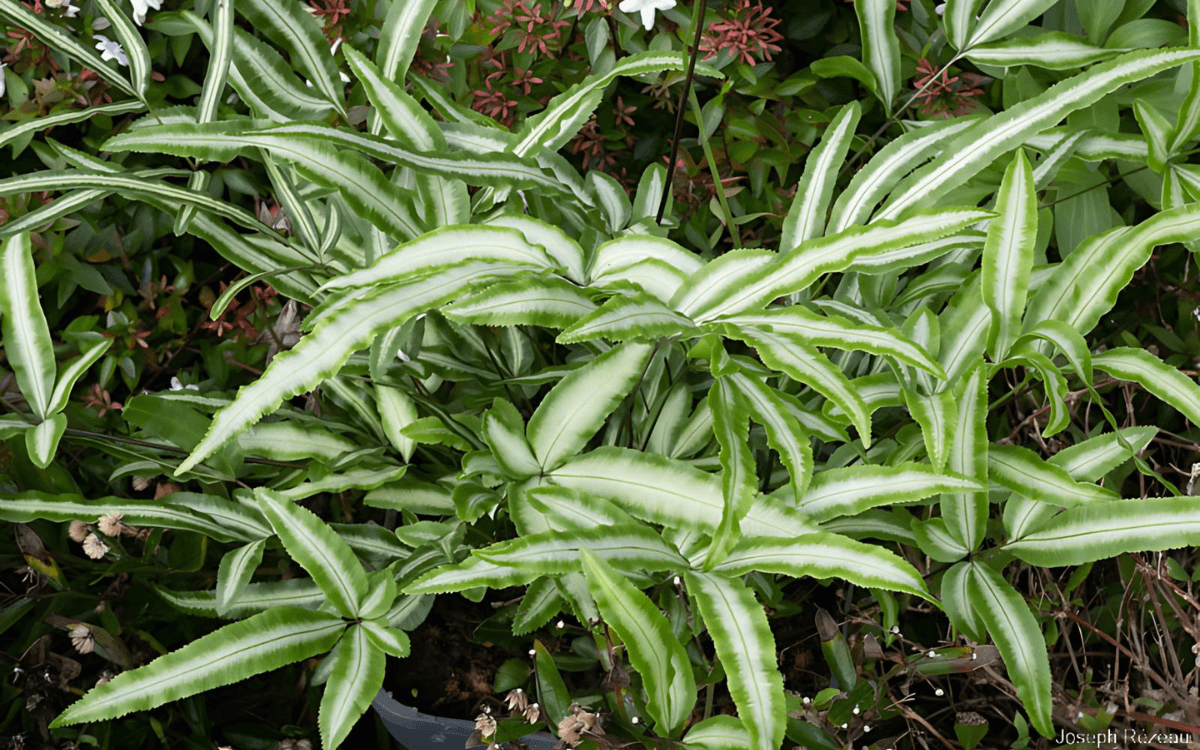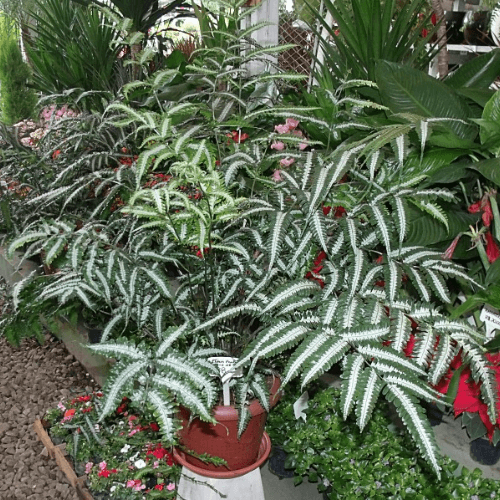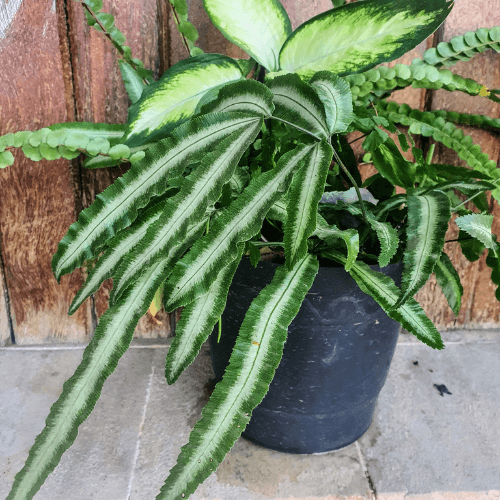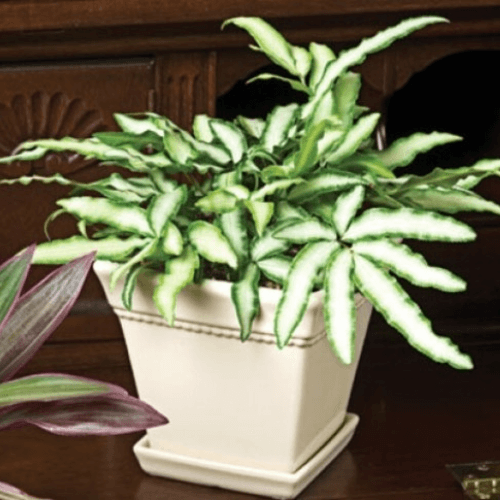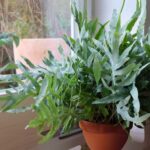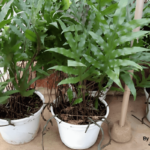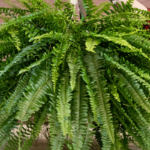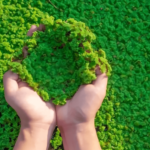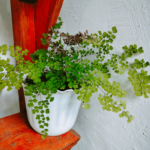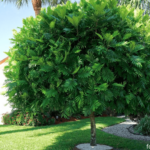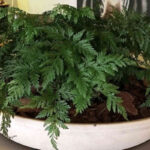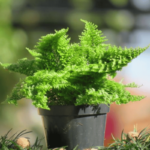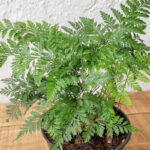Known for its eye-catching and attractive leaves, the ribbon fern (scientific name: Pteris cretica) is a perennial ornamental plant that has gained popularity in indoor landscaping and plant collections around the world.
Originating from Central and South America, this is a versatile and easy-to-grow species.
Keep reading, because further down we’ll explore the characteristics, curiosities, and how to properly cultivate the ribbon fern or cretan brake fern.
Plant Characteristics
The Pteris cretica is a plant that won’t take up much space in your garden, varying from 25 to 40 cm (9.8 to 15.7 inches) in height, it is ideal for pot cultivation, window boxes, or even directly in the ground.
Its leaves stand out due to the contrast between vibrant green and cream-white, with long, narrow, and feather-shaped leaves (see the photo below).
This is a non-toxic plant for humans and pets, however, it is not recommended for consumption.
Below I will detail the steps necessary for you to properly cultivate your ribbon fern.
Ideal Climate
Providing the correct climate conditions for your ribbon fern is an extremely important care that will help in the growth and health of your plant. The main care you should have are:
- Lighting
- Humidity
- Temperature
- Ventilation
Below I will explain more about each of these cares.
Lighting
The cretan brake fern benefits from moderate lighting, preferring indirect sunlight.
Direct exposure to sunlight can be harmful, causing burns on the delicate leaves.
Thus, it is advisable to position the plant in places where the light is filtered, whether indoors such as living rooms and winter gardens, or outdoors, under the protection of other plants or structures that provide partial shade.
Read too:
- Japanese Fern Tree – How to Care and Characteristics
- How to Care for Ferns in 9 Steps (For Beginners)
- Leatherleaf fern – Care, Characteristics and Curiosities
- Monarch Fern – How to Care and Propagate
Humidity
This plant requires high levels of humidity for its full development, ideally between 80 to 90%.
In the image below, you will be able to see two recommended practices to increase humidity:
- Misting water on the leaves.
- Using a tray containing moist pebbles under the pot. Prepare a container with a layer of stones and water, positioning it directly below the fern’s pot. When placing your fern on this setup, ensure that the pot rests on the stones, avoiding direct contact with the water.
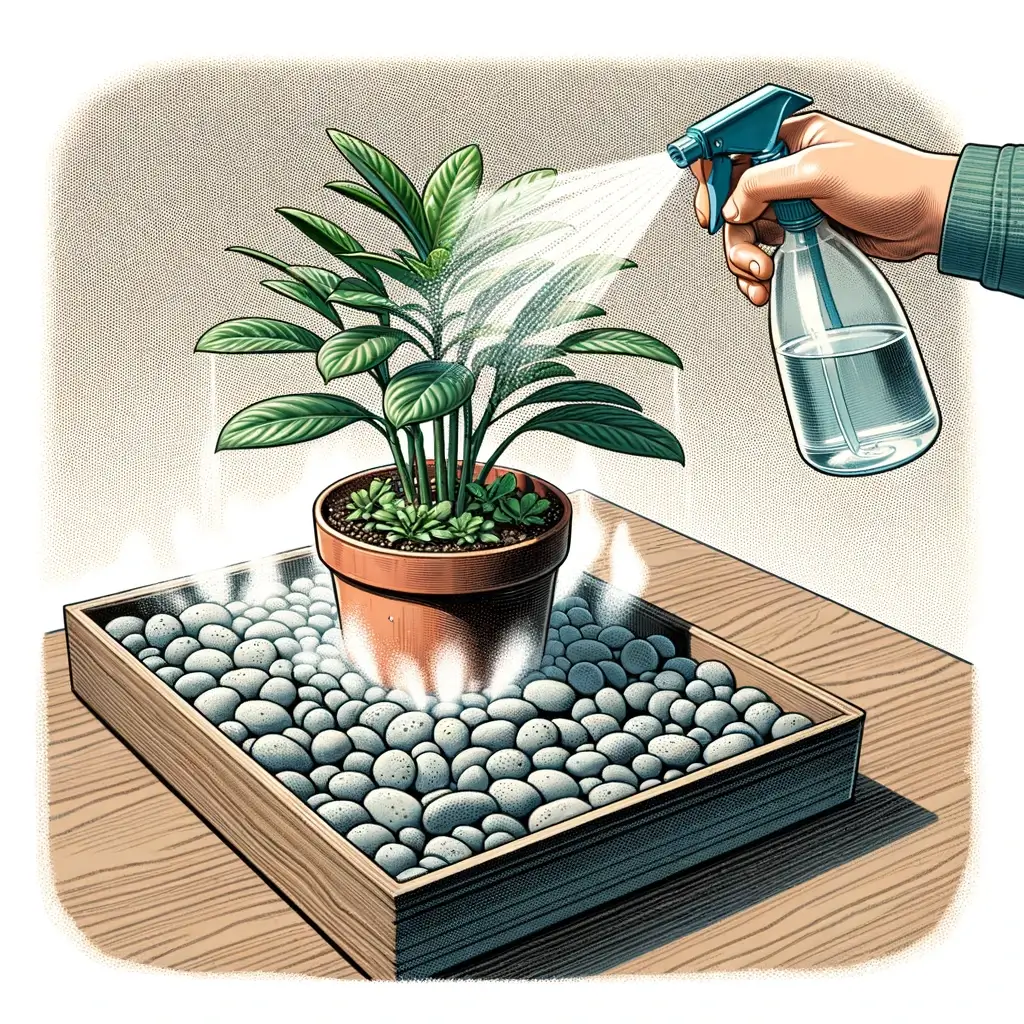
Indoors, humidifiers can be a valuable tool to keep the air around the plant satisfactorily moist.
Temperature
The ideal temperature for its growth and healthy development is between 16°C and 24°C (60.8°F and 75.2°F).
Temperatures below 15°C (59°F) should be avoided, as the plant does not tolerate cold well. Moreover, it is crucial to protect the ribbon fern from sudden changes in temperature, which can be harmful.
Ventilation
The ribbon fern benefits from moderate ventilation.
It should be positioned in a place with good ventilation but should be protected from strong winds.
Fertilization
For the cretan brake fern, the use of organic fertilizers rich in nitrogen is a great option.
High-quality compost or well-decomposed cow manure are ideal choices, as they provide a slow release of nutrients, which is beneficial for the plant.
Moreover, diluted liquid fertilizers or slow-release specific for green plants can be used, provided they are applied according to the manufacturer’s instructions to avoid over-fertilization.
The frequency of fertilization varies according to the season, reflecting the growth cycle of the ribbon fern.
- During the warmer seasons, such as spring and summer, when the plant is at its peak of growth, fertilization should be done monthly.
- In the colder months of autumn and winter, fertilization should be reduced, limiting it to once every two or three months.
This reduction helps prevent excessive nutrient buildup, which can be harmful during periods of slower growth.
When applying fertilizer, it is crucial to do so in the soil around the plant, avoiding direct contact with the leaves to prevent chemical burns. It is important to follow the recommended dosage, preferably erring on the side of parsimony, to minimize the risk of over-fertilizing.
Watering the Ribbon Fern
The frequency of watering depends on various factors, for example, the season, climatic conditions, and the environment where the plant is located.
Keep the soil moist, but not waterlogged.
During the summer, due to increased temperatures and reduced air humidity, the ribbon fern may require more frequent watering; in winter, the frequency should be reduced.
Water directly on the soil, as this prevents moisture accumulation on the leaves, which can lead to health problems for the plant, such as the development of fungi.
The use of a spray bottle or watering can help distribute water evenly, ensuring the soil receives the necessary hydration without waterlogging.
Pruning, Planting, and Replanting
Regular pruning is important to remove old, dry, or damaged leaves, keeping the cretan brake fern looking healthy.
This procedure not only improves the aesthetics of the plant but also prevents diseases and pests by removing parts that could become a focus for infections.
Pruning should be performed with clean, sharp scissors.
It is essential to carry out this practice carefully, avoiding damage to the healthy parts of the plant.
For planting, the use of enriched soil with composting, which offers good drainage to avoid excess moisture, potentially harmful to the roots, is recommended.
The chosen location for planting should provide shade and protection against drafts, creating an environment conducive to the plant’s development.
The ideal depth for the rhizome is about 7 cm (about 2.75 inches) below the soil surface, allowing healthy and stable growth.
Replanting is a necessary practice for the ribbon fern, especially when the plant outgrows its current pot or every two years, to renew the substrate and ensure enough space for root growth.
The process involves carefully removing the plant from the pot, removing the old soil from the roots, and pruning any dead or damaged roots.
Then, the plant should be replanted in a new pot with new substrate.
Propagation
Division is an effective method for propagating the ribbon fern, ideal for separating and cultivating new plants from a mother plant.
This process should be carried out preferably at the end of winter or beginning of spring, coinciding with the replanting period. To divide the clump:
- Gently remove the plant from the pot, clean the excess soil from the roots.
- Use a clean and sterilized knife to divide the plant into two or more parts, each with a portion of the root system.
- Plant each division in a separate pot, using soil enriched with composting.
It is crucial to carry out the division carefully to avoid damage to the roots and leaves, minimizing the risk of stress and diseases in the new plants.
Division not only helps generate new plants but also revitalizes the mother plant, providing more space for its development.
Read too:
- Marisa Fern: 7-Step Growing and Care Guide
- Rabbit’s Foot Fern (Davallia fejeensis): Cultivation Guide
- Nephrolepis exaltata (Boston Fern): How to Grow and Care
Pests and Diseases
By following the care mentioned above, your cretan brake fern is unlikely to have problems with pests or diseases, but it is important to understand that these are problems that can appear even when your cultivation is correct.
Therefore, below I will explain about the main pests and diseases that can appear on the Pteris cretica.
- Leaf Spots and Powdery Mildew: Dark or gray spots on the leaves may indicate the presence of fungi. Powdery mildew, characterized by a white or gray coating on the surface of the leaves, is another common fungal problem.
- Gray Mold and Root Rot: Conditions of excessive moisture can favor the development of gray mold on the leaves and root rot, resulting in softened parts and an unpleasant odor.
- Mealybugs and Aphids: These insects suck the sap from the plant, weakening it. Mealybugs can be identified by cottony white spots, while aphids are small and can be seen grouped on the leaves and stems.
- Slugs: Prefer moist environments and can cause significant damage to the foliage at night.
To treat pests, the application of neem oil or manual removal with a cloth soaked in alcohol can be effective.
In the case of severe infestations, specific pesticides may be necessary.
For fungal diseases, removing the affected parts and applying fungicides can help control the spread.
Uses in Decoration
- Composition with Other Plants: The ribbon fern combines well with other plants in pots or terrariums, creating vibrant and diverse green compositions. Its delicate texture and vibrant color complement a wide variety of ornamental plants.
- Interior Decoration: Due to its elegant foliage, the cretan brake fern is an excellent choice for decorating indoor spaces, adding a touch of nature and freshness to any environment. It can be placed in living rooms, bathrooms, offices, among other spaces that benefit from its natural aesthetic.
- Leaf Cleaning: To maintain the vibrant appearance of the plant, regularly clean the leaves, removing dust and debris. This not only improves aesthetics but also promotes better photosynthesis.
This was our complete article on the Pteris cretica, also known as the ribbon fern or cretan brake fern.
I hope that throughout this article, you have learned a little more about the characteristics and cultivation of this fern.
If you liked this text, help us by sharing it on your social networks and also leave a comment below sharing your story with this plant.


